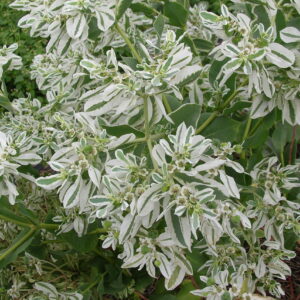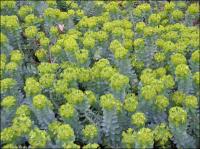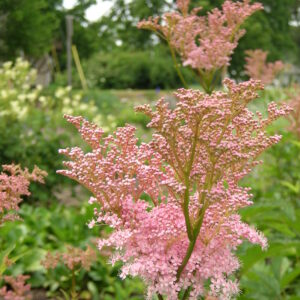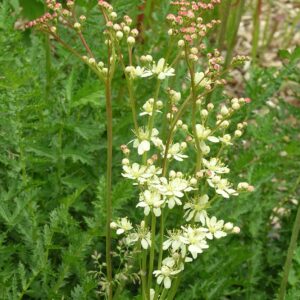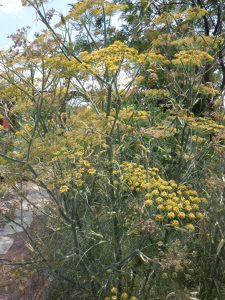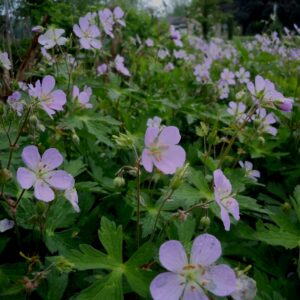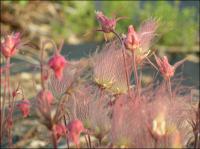Prairie Plants
Showing 41–48 of 81 results
-
Euphorbia marginata Snow-on-the-mountain reseeding ANNUAL Let seeds fall in autumn
Clean white variegated leaves and flowers (bracts), very showy midsummer to fall. Use caution with internal milky sap.
OUT OF STOCK
Clean white variegated leaves and flowers (bracts), very showy midsummer to fall. Use caution with internal milky sap.
Size: 18” x 10”
Care: sun moist well-drained soil, drought tolerant.
Native: Plains from Dakota to Texas
Size: Wonderful cut flower just be careful of the milky sap.Sioux crushed leaves in water and boiled it for a liniment to remedy swelling; boiled whole leaves in water to increase milk for new mothers. Collected on Lewis and Clark expedition three times, once July 28, 1806 along Marias River. A “most elegant species.” Breck, 1851.
-
Euphorbia myrsinites Donkeytail spurge Z 5-8
Chartreuse umbels at stem tips in early spring contrast succulent blue-gray foliage encircling the reclining stem.
Chartreuse umbels at stem tips in early spring contrast succulent blue-gray foliage encircling the reclining stem.
Can not ship to: Colorado.
Size: 4” x 12”
Care: Sun in well-drained soil
Native: Western Asia
Awards: Royal Horticultural Society Award of Merit.Euphorbia was named for Euphorbus, physician of Numibian King Juba, father of Ptolemy (c. 50 B.C. – 20 A.D.) Reputedly Euphorbus used spurge to remedy the King’s enlarged stomach. Euphorbus’s brother was Augustus Caesar’s physician. Myrsinites is a Greek word meaning “resembling myrtle.” This plant described by Swiss botanical scholar Conrad Gesner in his book Horti Germaniae published in 1541.
-
Euphorbia polychroma Cushion spurge syn. Euphorbia epithymoides Z 4-9
May – June a clump of flashy chartreuse bracts frame each flower altogether growing in a dome 12-18" tall and wide on erect, sturdy stems. In fall foliage turns orangey-red.
May – June a clump of flashy chartreuse bracts frame each flower altogether growing in a dome 12-18″ tall and wide on erect, sturdy stems. In fall foliage turns orangey-red.
Size: 16" x 24"
Care: Sun, moist well-drained humusy soil.
Native: Central and Southern Europe
Awards: Royal Horticultural Society Award of Garden Merit.Polychroma means many colors referring to the fact that the foliage changes colors. Named by Swedish botanist Linnaeus 1753.
-
Filipendula rubra ‘Venusta’ Queen of the prairie Z 3-9
Extraordinary frothy pink plumes, like cotton candy, blooming in midsummer
Extraordinary frothy pink plumes, like cotton candy, blooming in midsummer
Size: 4-6’ x 4-5'
Care: sun to part shade in moist well-drained to moist soil
Native: US East coast west to MN s to MO and NC, Wisconsin native
Wildlife Value: This creates pollen but not nectar limiting the pollinators to bees and flies (Butterflies and wasps want nectar.).
Awards: Award of Garden Merit from England’s Royal Horticultural Society.Name is Latin filum pendulus meaning hanging by thread referring to threads on the roots of another species.
Wildlife value: This creates pollen but not nectar limiting the pollinators to bees and flies (Butterflies and wasps want nectar.)
Meskwaki Indians used the species for heart ailments and as an aphrodisiac. Although the plant’s name has been changed five times, the species was 1st described in 1768. Robinson, Rhodora, v. 8 pp. 202-205 (1907). “Filipendulina, a New Binomial,” The flowers of this cultivar are darker than the species. Described by German botanist Andreas Voss (1857-1922). -
Filipendula vulgaris syn. F. hexapetala Dropwort or Meadowsweet Z 3-9
In early summer bundles of milk white ball-shaped buds and open blossoms atop clumps of finely-cut, fern-like leaves, both flowers and foliage fragrant, early to mid-summer.
In early summer bundles of milk white ball-shaped buds and open blossoms atop clumps of finely-cut, fern-like leaves, both flowers and foliage fragrant, early to mid-summer.
Size: 24" x 18"
Care: sun in moist to moist well-drained soil
Native: Europe, north and central Asia
Wildlife Value: attracts bees, beetles and fliesFilipendula is Latin from filum meaning thread and pendulus meaning hanging, small tubers hang by threadlike roots. In the 1600’s Nicholas Culpepper described Meadowsweet’s medicinal uses as curing bladder problems, throat, lung diseases and “the falling sickness.” Filipendula vulgaris also remedied bloated stomachs “dissolving and breaking the wind.”
-
Foeniculum vulgaris ‘Purpureum’ Bronze fennel Z 4-9
Yellow blooms on flat-topped umbels in late spring into summer, features dusky purple, feathery, compound, aromatic purple leaves with needle-like segments.
OUT OF STOCK
Yellow blooms on flat-topped umbels in late spring into summer, features dusky purple, feathery, compound, aromatic purple leaves with needle-like segments.
Size: 4-5’ x 2-3’
Care: sun to part shade in well-drained soil.
Native: Mediterranean
Wildlife Value: attracts bees and birds. Nectar plant for Swallowtail butterflies.Ancient Egyptians used fennel as food and medicine. Considered a snake bite remedy in ancient China. During the Middle Ages people hung it over doorways to drive away evil spirits. Fennel is also associated with the origin of the marathon. Athenian Pheidippides carried a fennel stalk on his 150-mile, 2-day run to Sparta to gather soldiers for the battle of Marathon with Persia in 490 B.C. The battle itself was reportedly waged on a field of fennel. Miller’s The Gardeners Dictionary, eighth ed. 1768.
-
Geranium maculatum American Cranesbill, Wild geranium, Spotted geranium Z 3-8
Clusters of two to five pink infused with lavender, flowers of five, paddle-shaped petals bloom in late spring to early summer.
Clusters of two to five pink infused with lavender, flowers of five, paddle-shaped petals bloom in late spring to early summer.
Size: 24" x 18"
Care: Full sun to part shade in moist to moist well-drained soil
Native: East North America, Wisconsin native.
Wildlife Value: primarily visited by several kinds of bees.Native Americans taught colonists to use the plant to cure diarrhea, dysentery, and hemorrhaging. Also used on sores, open wounds, canker sores and sore feet. The Choctaw prescribed it for venereal disease. Sent to Europe in 1732. Jefferson asked John Bartram to obtain seeds, 1786. Collected by French plant hunter André Michaux (1746-1802). Pressed specimen in Emily Dickinson’s herbarium.
-
Geum triflorum Prairie smoke, Old Man’s whiskers Z 3-7
Pale purplish-pink dangling cup-shaped flowers in spring to early summer, followed by hair-like, pink seed heads like the hair on a troll doll.
Pale purplish-pink dangling cup-shaped flowers in spring to early summer, followed by hair-like, pink seed heads like the hair on a troll doll.
Size: 10" x 8" but slow to grow to this width
Care: sun in well-drained to moist well-drained soil
Native: all of northern No. America, Wisconsin native
Wildlife Value: attracts butterflies, bees, wasps, and moths. Resists deer and rabbits.
Awards: Great Plants for Great PlainsIntroduced to gardens in 1609. Many Native American medicinal uses. Blackfeet used it to cure coughs, skin sores and wounds on people and horses, swollen eyes, canker sores, and fuzzy thinking in people. Crushed, ripe seeds made a perfume. Okanagan-Colville women made a love potion from the roots, as well as curing vaginal yeast infections. The Eastern Cascades of Canada brewed a medicinal tea for eye-wash, sore throats, and general aches from the plant. Sioux used it for many ailments: sore eyes, canker sores, sore throat, perfume, wounds, and added it to mixtures of plants for smoking. Collected by Meriwether Lewis on June 12, 1806 on the Weippe Prairie, not far from the villages of the Nez Perce in Idaho.

